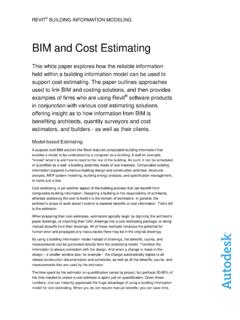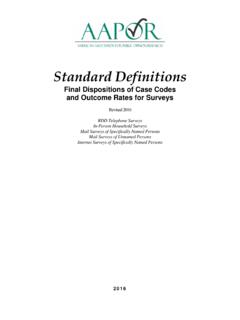Transcription of Java Arrays, Objects, Methods - George Mason University
1 java Arrays, Objects, MethodsCourse TopicsElements of the java Platform The java Language java Arrays, Objects, Methods java s Object Orientation and I/O Interfaces, Graphical User Interfaces, and Applets Topics this week: Last Week Last Week - Control Flow - Branching Control Flow - Loops Creating Multiple Student Objects java Objects References to and Creating Objects Creating collections of objects What is an "array"? Arrays Creating an array Arrays Can Be Made of Any Type or Class Array Manipulation Saving Multiple Student Objects Objects - Instances of classes java Methods Introduction to Inheritance Inheritance Example Assignment for next time 1 Minimal Employee class2 java Arrays, Objects, Methods Last WeekThe java Language:The syntax and constructs for writing java code The java PlatformJava Program (application, applet, servlet) bytecodeJava Application Programming Interface (standard packages; also bytecode) java Virtual Machine (executes bytecode)Hardware, , your PC, OSF1, workstations, rings.
2 Primitive Data Types byte short int long double float char booleanString is a built-in Object type, not a PrimitiveUser Defined ObjectsCreating and initializing instances of classes 3 java Arrays, Objects, Methods Last Week - Control Flow - Branching"if" statements if (expression that evaluates to a boolean result) { // Perform the enclosed statements if true .. } else { // Perform the enclosed statements if not true .. }"switch" statements switch (expression that results in an integer value) { case 42: // or whatever a possible value of expression is .. break; case 39: // or whatever another possible value is .. break; .. default: // (optional) catch all other values .. break; }4 java Arrays, Objects, Methods Control Flow - Loops"for" loopsPerform group of statements for a number of times for (initialization ; expression that evaluates to boolean ; increment) { // Code that executes each time through the loop.}
3 }"while" loopsPerform group of statements while a condition is statisfied while (expression that evaluates to boolean ) { // Code that executes each time through the loop .. }"do .. while" loopsPerform group of statements while a condition is statisfied do { // Code that executes each time through the loop .. } while (expression that evaluates to boolean );Question: How is while different from do .. while5 java Arrays, Objects, Methods Creating Multiple Student Objects6/** Encapsulate information relating to a single student. ** @author: Jonathan Doughty **/ public class StudentGroup { public static void main(String[] args) { if (( == 0) || ( % 2) != 0) { ("usage java StudentGroup [student names]"); } else { (args); } } public static void makeSomeStudents(String[] arguments) { CSStudent aStudent; int nextId = 0; for (int arg = 0; arg < ; arg++) { // Each time through the loop a new CSStudent object is // created and its reference is assigned to the aStudent // field.}}
4 String name = arguments[arg]; String id = (nextId); nextId++; aStudent = new CSStudent( name, id); (100); // Ask each Student to identify itself (aStudent); } // Question: Do any of the CSStudent objects created still // exist? }}7 java Arrays, Objects, Methods java ObjectsClassesDefinition: A class is a blueprint or prototype that defines the variables andmethods common to all objects of a certain : The java Tutorial, Campione & Walrath, 1998 Objects - Instances of classesDefinition: An object is a software bundle of variables (fields) and related : The java Tutorial, Campione & Walrath, 1998 Objects instantiate classesObjects are created (via new) from the template that a class defines. Question: Why define classes and create object types?8 java Arrays, Objects, Methods References to and Creating ObjectsPrimitives come into existence by declaring them int count; float distance; boolean guilty; char letter;Declaring an Object type establishes space for an Object referenceBut does not, by itself, create the object itself.
5 Objects must be declared and then instantiatedCreating (Instantiating) and Using Objects Insect bug; // declare name for Insect reference bug = new Insect(); // create and save the instance9 java Arrays, Objects, Methods Creating collections of objectsSeveral ways to create a group of objects, all of the same type: Individual instance variables:Student aStudent;Student anotherStudent;Student yetAnotherStudent;..aStudent = new Student(); ("Fred Flintstone");anotherStudent = new Student(); ("Wilma Flintstone");yetAnotherStudent = new Student(); ("Barney Rubble");ArraysTo be discussed in a few minutes One of java s "Collections" ; ; ; ; ;We won t be covering the Collection classes in this course. 10 java Arrays, Objects, Methods What is an "array"?A graphic representationA variable (field, reference) int answer; CSStudent aStudent;An array int[] answers = new int[4]; CSStudent[] someStudents = new CSStudent[4];11 java Arrays, Objects, Methods ArraysArrays themselves are objects in JavaEven arrays of primitive data types.
6 Int intArray[];intArray = new int[4];float[] fnumbers = new float[8];CSStudent studentArray[] = new CSStudent[10];Note the last declaration and instantiation of an array of CSStudent objectsNote that array declarations use [], not () Question: How many CSStudent objects are created by the declaration?Since arrays are objects they inherit all the characteristics of array objects also have some other characteristics; , each array has anassociated field named length. Notice it is a field named length, unlike the instance method named length()associated with String objects. 12 java Arrays, Objects, Methods Creating an is like creating an object from a class: declaration - assigns a name to the reference instantiation - creates space for the object initialization - gives the objects values for the first timeArrays of primitive data types are initialized to 0 int[] grades;grades = new int[60];Arrays of Objects are initialized to null Student[] students;students = new Student[60];The students array has been declared and instantiated, but not yet initialized: noStudent object references have been assigned to the array elements.
7 To initialize the array elements, you need to instantiate each individually: for (int nextStudent = 0; nextStudent < 10; nextStudent++ ) { students[nextStudent] = new CSStudent();}13 java Arrays, Objects, Methods Arrays Can Be Made of Any Type or Class"Declaring a variable of array type does not create an array object orallocate any space for array components. It creates only the variable itself,which can contain a reference to an array."from: java Language Specification, Gosling, Joy, and Steel, 1996 Arrays are created (instantiated) with new, just like other objects. Once an array is created, its length never changes. Question: Any idea why?Examplesint[] intArray = new int[4]; // elements initially set to 0 CreditCard cards[] = new CreditCard[MAXCARDS]; // elements initially set to null // notice the [] can be placed with the field name // or the type; though the latter is "better"Tip: If you need a colllection s size to change consider using oranother collection class instead of arrays 14 java Arrays, Objects, Methods ** An Example of some array manipulation **/ public class ArrayExample { public static void main (String args[]) { int numberOfElements = 0; if ( > 0) { // Use value from command line numberOfElements = (args[0]); } ArrayExample anExample = new ArrayExample(); (numberOfElements); // Notice that method calls can be included in other method // calls: in this case, returning primitive values that will // be converted to String objects.}}
8 ("sum = " + () + " average = " + () ); } private int[] intArray; // all instance (non static) Methods // have acess to this instance variable /** Initialize the array (which will be made big enough to hold size entries) contents with some numbers */ public void initializeArray(int size) { intArray = new int[size]; int startValue = size * 3; // pick any number for (int i = 0; i < ; i++) { intArray[i] = startValue; // put current number in next slot startValue = startValue - 2; // and calculate next number } } /** Calculate the sum of the array contents */ public long Sum() { int index; int arrayLen; long sum = 0; // All arrays have a length field that specifies how many // elements the array contains arrayLen = ; // Calculate the sum the values in all array elements for (index = 0; index < arrayLen; index++) { sum += intArray[index]; } return sum; } /** Calculate the average of the array contents */ public double Average() { // Notice that Average calls Sum() to total the values in the // array, rather than duplicating that calculation here.
9 What // is going on with the "(double)" ? double average = (double) Sum() / ; return average; } }16 java Arrays, Objects, Methods Array ManipulationIn class example of some array manipulationWrite a java class named This class should have the followingmethods. 1. public void listArgs( String [] args) To list out the arguments in an array of Strings 2. public long product( int [] intArray ) To compute the product of the integers in the array intArray 3. public static void main( String[] args ) Should have the following code: if ( == 0) { ("usage: Arrays [integers]");}else { Arrays inst = new Arrays(); (args); int input[] = new int[ ]; for (int i = 0; i < ; i++) { input[i] = (args[i]); } ("product = "); long answer = (input); (answer);}17 java Arrays, Objects, Methods Saving Multiple Student ObjectsAlso demonstrates one class using instances of another 18/** A class that will make use of another class.
10 **/public class CSClass { public static void main(String[] args) { if ( == 0) { ("usage java CSClass [student names]"); } else { int numberOfStudents = ; CSClass cs161 = new CSClass( numberOfStudents ); ( args ); (); (); } } // Instance fields CSStudent students[] = null; int last = 0; public CSClass( int number ) { students = new CSStudent[ number ]; } public void enroll(String[] names) { int numberOfStudents = ; int id = 0; for (int arg = 0; arg < numberOfStudents; arg++) { String name = names[arg]; id++; // assign next id String idString = (id); // as a String CSStudent aStudent = new CSStudent( name, idString); (100); // save the reference to the current student in the next array slot students[last] = aStudent; last++; } } public void assignLabPartners() { // Assign every other pair of students as lab partners int next = 0; int pairs = last / 2; while (pairs > 0) { students[next].}}}
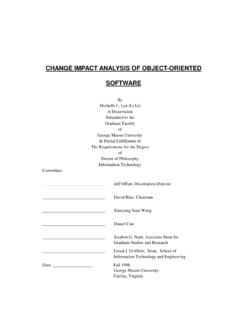

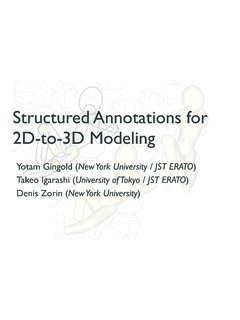

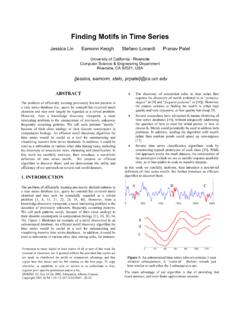
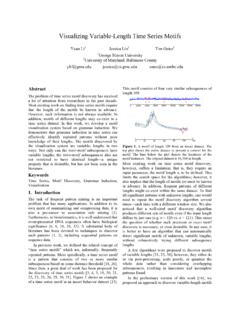
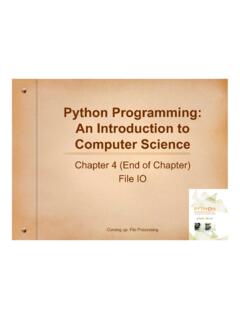
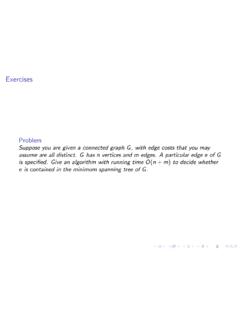

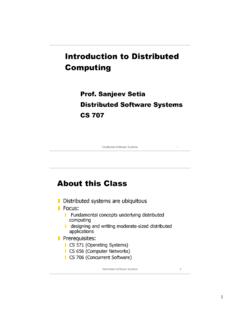


![[MI] Multiple Imputation - Stata: Software for Statistics ...](/cache/preview/2/b/2/4/5/3/3/8/thumb-2b245338b2cb7206506cf7c9168982f8.jpg)

